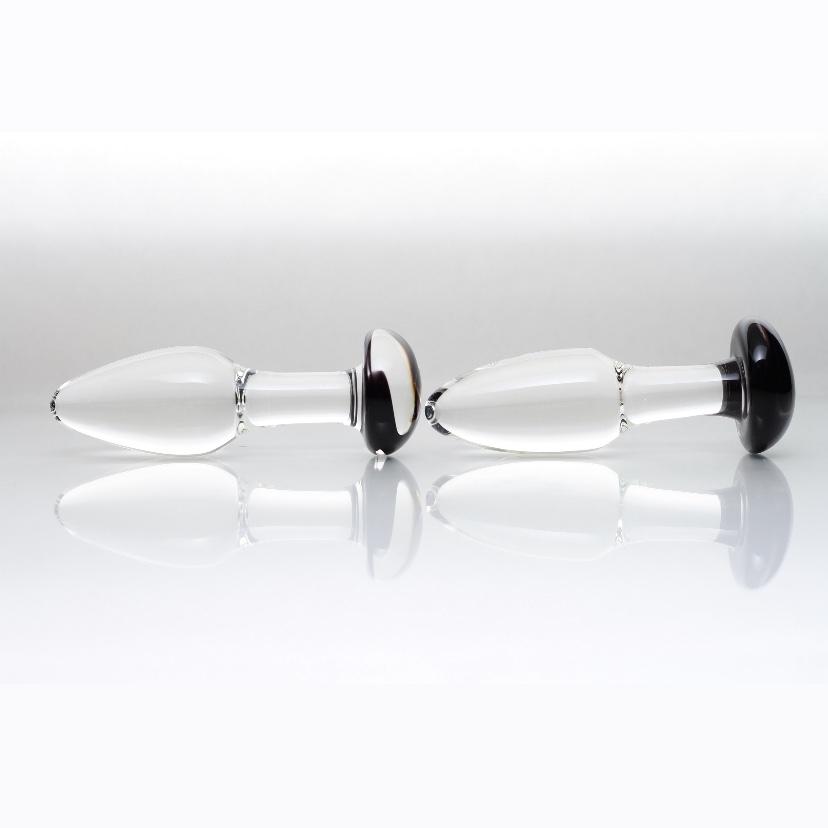
Reasons you struggle to reach orgasm and what to do about it
Are you struggling to achieve orgasm? Or have you never experienced one, whether alone or with a partner? You may find pleasure in sexual activities but have yet to reach orgasm.You're not alone. This experience is more common than you might realize.
You're not broken—many individuals encounter similar challenges, and there are various ways to explore and address them with support and understanding. Lori Brotto, author of "Better Sex Through Mindfulness," reveals that nearly 50% of British women grapple with some form of sexual dysfunction, including difficulty reaching orgasm. An inability to reach orgasm is very common, and more so among younger women than older women. Some women take longer to find their ability to orgasm than others.
Struggling to reach orgasm is a common concern for many women around the world across all ages. The inability to climax is often associated with distress and can significantly disrupt various aspects of life. It's frequently intertwined with feelings of sexual inadequacy and insecurity, impacting not only the quality of relationships but also a person's self-esteem.
It can be a perplexing and disheartening experience, casting a shadow over what should be moments of intimate connection and pleasure. Let's look into what might be happening and how to make it more likely for you to reach the peak.
What is orgasmic dysfunction?
Orgasmic dysfunction is when a person has trouble reaching an orgasm despite sufficient sexual arousal and stimulation. Orgasms are intensely pleasurable moments of release, accompanied by involuntary contractions of the pelvic floor muscles, that happen at the peak of sexual arousal. We explored the different kinds of orgasms and sensations in one of our previous articles.
Orgasmic dysfunction can impact individuals of all genders, yet it appears to be more prevalent among females. Researchers estimate that female orgasmic disorder, characterized by recurrent orgasmic dysfunction, may affect between 11 to 41 percent of women.
Orgasmic dysfunction encompasses various types of difficulties or abnormalities in achieving orgasm. These include:
- Primary anorgasmia (Lifelong): This type of orgasmic dysfunction occurs when an individual has never experienced an orgasm despite adequate sexual stimulation. Primary anorgasmia is most common in people who are younger, less sexually experienced or grew up in very religious and sexually repressive environments.
- Secondary anorgasmia (Acquired): Involving the inability to reach orgasm despite having previously experienced orgasms, this type can occur suddenly or gradually over time and may be linked to factors such as medical conditions, recent pelvic region surgeries, assault, medications, or changes in relationships.
- Situational anorgasmia: This refers to the inability to achieve orgasm in certain situations or with specific partners while still being able to orgasm in other circumstances. These situations could vary from the environment you're in, the partner you're with, to the type of stimulation you're receiving. Situational anorgasmia is actually very common.
- Generalized anorgasmia: Characterized by the consistent inability to reach orgasm across various situations and with different partners, this type of dysfunction is not limited to specific circumstances and may indicate underlying physical or psychological issues that require attention.
It's important to understand that it's perfectly normal for individuals not to reach climax every time. For many women, not consistently reaching orgasm during sexual encounters isn't and shouldn't be distressing. In these cases, the absence of an orgasm isn't considered a disorder.
Reasons you may have difficulty reaching orgasm
Sexual arousal and orgasms are intricate responses influenced by a variety of physical, emotional, sensory, and psychological factors. Challenges in any of these areas can impact your ability to reach orgasm. Let's look into the common reasons why some women struggle to orgasm and explore potential solutions.
Lack of Practice: You are not practising enough. Orgasm is a learned skill, just like learning a language. Dedicating time to mindful masturbation can significantly enhance your ability to reach climax. Orgasm is not solely a physical response but is also deeply influenced by neural pathways and connections in the brain. Regular self-exploration through self-pleasure practice can strengthen these neural pathways, making it easier to reach climax. In addition to exploring your own body and what gives you pleasure, we recommend incorporating pelvic (or Kegel) exercises into your routine to enhance pelvic floor muscle tone. Pelvic floor muscle tone plays a crucial role in your ability to feel pleasurable sensations, and it also affects orgasmic intensity. Both underactivity, indicating weakness and overactivity (excessive muscle tension) of pelvic floor muscles can interfere with the rhythmic contractions essential for achieving orgasm. Pelvic and kegel exercises will improve your pelvic floor awareness.
When self-pleasuring, experiment with different techniques and sensations, utilizing toys to explore new avenues of pleasure. Try not to chase the experience of orgasm, but instead permit yourself to savour the journey of pleasure wherever it takes you. Embrace your body and enjoy uncovering and discovering what brings you pleasure.
Learn about how breath and moving your body can help you awaken orgasmic sensations. Our other articles about self-pleasure and mindful masturbation:
Guide To Pelvic Floor Exercises
Increase Your Internal Sensations With This Practice
How To Use Pleasure Wands For Maximum Pleasure
Lack of Sexual Education: Limited sexual knowledge or misinformation about anatomy and sexual response can contribute to difficulties in achieving orgasm. We cannot emphasize enough the importance of accurate information and comprehensive sexual education in fostering sexual empowerment. Educate yourself about your body and sexual response through reputable sources, such as books, workshops, or online resources. Engage in open and honest communication with sexual partners about desires, boundaries, and preferences to enhance mutual understanding and pleasure. Seek guidance from a qualified sex educator or therapist to address any misconceptions or gaps in sexual knowledge and develop practical skills for enhancing sexual satisfaction and orgasmic experiences.
Recommended articles about pleasure anatomy:
Learn the Female Pleasure Anatomy
10 Things To Know About The G-Spot
Yoni Mapping For More Pleasure
Sexual Trauma or Shame: Traumatic experiences or cultural shame surrounding sexuality can imprint deeply on the brain, creating barriers to experiencing pleasure and reaching orgasm. Neuroplasticity, the brain's ability to reorganize and form new connections, offers hope for healing from these emotional wounds. Seek support from a qualified sex therapist who can guide you through trauma-informed therapy techniques, such as cognitive-behavioural therapy and mindfulness practices. By addressing underlying beliefs and processing past experiences, you can reshape the neural network associated with pleasure and cultivate a healthier relationship with sexuality.
Dyspareunia (Pain during sexual intercourse): Dyspareunia, commonly known as pain during sexual intercourse, significantly disrupts sexual pleasure and intimacy. It can arise from various underlying conditions, including endometriosis, vaginal scarring, vaginitis, vaginismus, pelvic inflammatory disease, and uterine fibroids. These conditions cause discomfort or sharp pain during penetration, affecting both physical enjoyment and emotional connection. Treatment typically entails addressing the root cause through medical interventions, therapy, or lifestyle adjustments aimed at enhancing sexual function and relieving pain.
Other Medical Factors: Anorgasmia, the inability to achieve orgasm despite adequate stimulation, can result from various medical conditions. Neurological disorders like multiple sclerosis or Parkinson's disease, hormonal imbalances such as hypothyroidism or testosterone deficiency, and pelvic floor dysfunction, among others, can disrupt the intricate processes involved in orgasm. Additionally, chronic pain disorders, cardiovascular diseases, psychiatric conditions and medications, genitourinary disorders, diabetes mellitus, cancer treatments, and substance abuse can all contribute to difficulties in experiencing sexual climax.
Mental Health: Depression, anxiety, and certain medications can disrupt neurotransmitter activity and alter brain chemistry, affecting sexual desire and orgasmic response. Neuroscientific interventions, such as cognitive-behavioral therapy and medication management, can address underlying mental health concerns while supporting sexual well-being. Engage in stress-reduction techniques, such as deep breathing exercises and progressive muscle r laxation, to regulate stress hormones and promote relaxation. Prioritize self-care practices that nourish your mental and sexual health, fostering a positive feedback loop between brain and body.
Relationship Dynamics: People often underestimate the importance of emotional connection and intimacy in facilitating sexual satisfaction and orgasm. The challenge of achieving orgasm can often reveal deeper dynamics within your relationship. It's conceivable that you might not feel sufficiently valued or secure to fully surrender and be vulnerable. Perhaps there are unresolved feelings or resentments towards your partner stemming from certain behaviors. It's worthwhile to explore these possibilities openly and honestly to foster a more fulfilling and connected relationship. Cultivate open communication with your partner, expressing desires and boundaries without fear or judgment.
Oxytocin, the "love hormone," plays a central role in bonding and sexual arousal. Engage in activities that promote oxytocin release, such as cuddling, kissing, and shared experiences, to deepen emotional connection and enhance sexual intimacy. Seek couples therapy with a sex-positive therapist to address relationship conflicts and co-create a supportive environment for sexual exploration and pleasure.
Stress: Chronic stress triggers the release of cortisol, a stress hormone that can dampen sexual desire and arousal. Practice mindfulness meditation to regulate stress responses and promote relaxation. Find a regular physical activity that you enjoy (yoga or long walks) to release endorphins and reduce stress levels. Create a calming bedroom environment conducive to intimacy and free from distractions and electronic devices. Prioritize self-care practices that nourish your overall well-being, allowing you to approach sexual experiences with a relaxed and receptive mindset.
Psychological Factors: Psychological factors, such as performance anxiety or negative self-talk, can significantly impact sexual response and orgasmic ability. Cognitive-behavioural techniques, including reframing negative thoughts and cultivating self-compassion, can reshape neural pathways associated with pleasure and arousal. Engage in mindfulness-based practices, such as meditation and visualization, to promote relaxation and reduce performance-related stress. Explore erotic literature or erotica to stimulate arousal and expand your imagination, fostering a more enriching sexual experience. Consider seeking therapy to address underlying psychological barriers and develop coping strategies for enhancing sexual confidence and enjoyment.
Medication Side Effects: Certain medications, including antidepressants, antihistamines, and blood pressure medications, can interfere with neurotransmitter activity and impact sexual functioning. Neuropharmacology offers insights into the mechanisms by which these medications influence sexual response. Consult with your healthcare provider to discuss alternative medication options or potential strategies for mitigating sexual side effects. Incorporate lifestyle interventions, such as regular exercise and stress management techniques, to support overall well-being and counteract medication-related impacts on your sexual function and experience. Open communication with your healthcare provider is essential for balancing the benefits of medication with your sexual health needs.
Hormonal Imbalances: Fluctuations in hormone levels, such as those associated with menopause or hormonal birth control, can disrupt sexual desire and orgasmic response. There is an intricate interplay between hormones and brain function in regulating sexual function. Consult with a healthcare provider specializing in hormone therapy to address hormonal imbalances and optimize sexual health. Incorporate lifestyle modifications, such as a balanced diet and regular exercise, to support hormonal balance and promote overall well-being. Experiment with alternative forms of contraception or hormone replacement therapy under medical guidance to alleviate symptoms and enhance sexual satisfaction.
The expectation to climax during sex can trigger anxiety, detracting from the overall experience. It's crucial to shift our perspective on sex, recognizing that pleasure and intimacy can be deeply fulfilling independent of orgasm. Whether alone or with a partner, exploring one's sexuality fosters a sense of empowerment and achievement. By experimenting with various activities and toys, the emphasis transitions from chasing orgasm to embracing the myriad sensations and potentials of our bodies. Letting go of the pressure to climax opens doors to profound connection and pleasure in sexual encounters, enriching our experiences in unexpected ways.





















